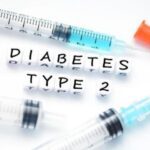India
healthysoch
Chennai/ New Delhi, October 08, 2021:
Acta Diabetologica, a journal that publishes reports of experimental and clinical research on diabetes mellitus and related metabolic diseases has published a Pan India study led by Dr. V. Mohan and his team of doctors from the Madras Diabetes Research Foundation and Dr. Mohan’s Diabetes Specialities Centre.
The aim of the study was to see whether the glycated haemoglobin (HbA1c) (a test of 3 months control of diabetes increases with age) even among individuals with normal glucose tolerance (NGT). Data acquired from a large national survey done in India was used for the study.
Data on glycaemic parameters at different age groups were obtained from the Indian Council of Medical Research – INdia DIABetes (ICMR–INDIAB) study, in adults aged ≥ 20 years representing all parts of India. Age-wise distribution of HbA1c was assessed among individuals with NGT (n = 14,222) confirmed by an oral glucose tolerance test using the World Health Organization (WHO) criteria. Results were validated in another large epidemiological study (n = 1077) the CURES study conducted in Chennai (India).
Commenting on the research, Dr. V. Mohan, Chairman & Consultant Diabetologist, Dr. Mohan’s Diabetes Research Centre & Founder, Madras Diabetes Research Foundation said, “Advancing age is associated with increased prevalence of many chronic diseases, including type 2 diabetes (T2D). However, one needs to be careful while diagnosing T2D in the elderly, as many of these individuals may have physiological changes in their ability to regulate blood glucose, implying that marginally elevated HbA1c levels need not always be indicative of pathology as it could be a normal age-related change in this population. We noted that HbA1c levels increase steadily with age. This suggests that age-specific cut-offs should be used while utilising HbA1c to diagnose diabetes and prediabetes, so as to minimize the risk of overdiagnosis and unnecessary initiation of treatment in elderly people who could have serious side effects if over treated.”
Among NGT individuals, HbA1c increased gradually with age from 5.16 ± 0.71% (33 mmol/mol) in the age group of 20–29 years to 5.49 ± 0.69% (37 mmol/mol) in those aged 70 + years. In the validation study, conducted in another study population, HbA1c was 5.35 ± 0.43% (35 mmol/mol) in age group of 20–29 years and 5.74 ± 0.50% (39 mmol/mol) in those aged 70 and above. In the INDIAB study, for every decadal increase in age, there is a 0.08% increase in HbA1c and this increase was more significant in females (females: 0.10% vs. males: 0.06%) and in urban (urban: 0.10% vs. rural: 0.08%) population.
Dr. R.M. Anjana, Vice-President, MDRF adds “The conclusion from this study is that a HbA1c of 6.5% which would be considered as diabetes could be normal value in some older people. Laboratory should report age adjusted normal values for all their lab tests.”
healthysoch






